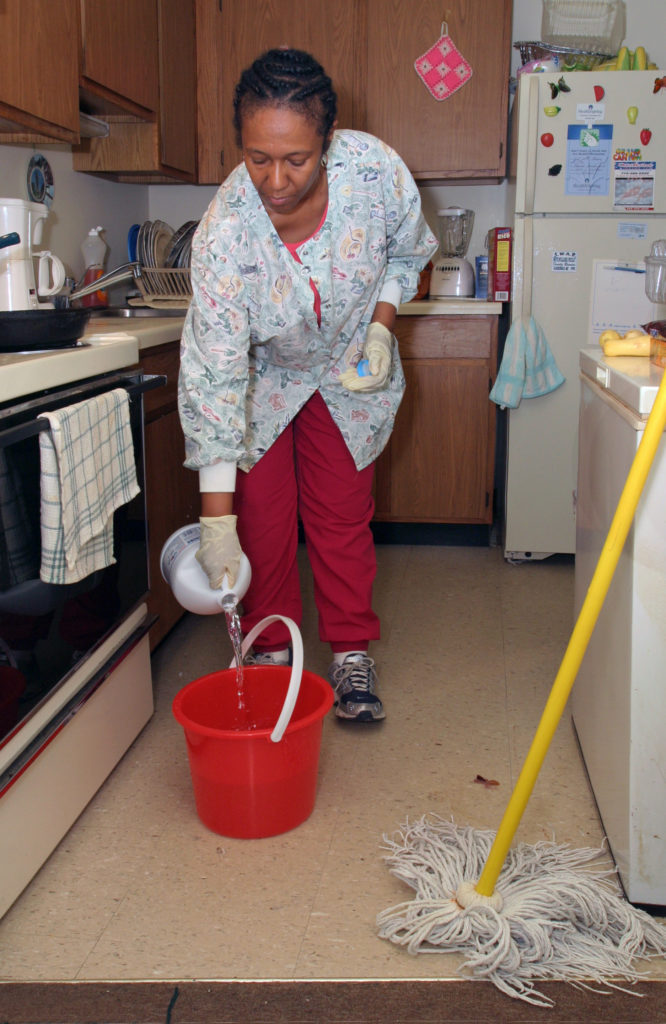
Obstructing the Right to Know
This pilot project on the accuracy of health hazard warnings on SDSs reveals that the chemical industry underreports the health hazards of their products and hides their potential harms from the employers that purchase—and the workers that use—their chemicals. The BlueGreen Alliance and Clearya have begun addressing this problem by developing the True Health Hazard Data Analysis and Visualization Tool, a software tool that would automate SDS review to identify missing or incorrect health hazard information, with an app to make that information readily available in an easily understood format
to employers, to exposed employees, and their representatives. Reports generated by the True Health Hazard Tool will be designed to facilitate voluntary SDS corrections by companies and regulatory intervention where required.
WHAT OSHA CAN DO TO MAKE SDSs MORE ACCURATE
OSHA’s HAZCOM Standard 1910.1200(g)(5) states that:
“The chemical manufacturer, importer or employer preparing the SDS shall ensure that the information provided accurately reflects the scientific evidence used in making the hazard classification. If the chemical manufacturer, importer or employer preparing the SDS becomes newly aware of any significant information regarding the hazards of a chemical, or ways to protect against the hazards, this new information shall be added to the SDS within three months.”
California, Washington, and Michigan all have similar language in their state OSHA rules. OSHA should take steps to enforce this provision of the HAZCOM standards by first notifying companies of their legal obligation to provide SDSs that publish/create/ develop accurate and complete information on health hazards. The project intends to work with federal and state OSHAs to make this happen.
WHAT WORKERS AND THIER UNIONS CAN DO TO MAKE SDSs MORE ACCURATE
Without accurate health hazard information, workers can’t protect themselves from harm and the required hazard training they receive from their employer can’t be as effective as it needs to be. Workers can make SDS accuracy an important occupational health issue in their workplace. Using their OSHA legal right to access the SDSs for all products in use, workers could utilize the True Health Hazard Tool to identify information gaps on the SDS and make the case for discontinuing the use of any product that lacks proper information. Workers can call for alternatives based on the hierarchy of controls and, where chemical products are needed, purchase only products for which accurate and complete information is provided on the SDS. Unions could make review of all SDSs a contractual requirement and then use the results to bargain for safer alternatives, based on the hierarchy of controls.
WHAT INVESTORS CAN DO TO MAKE SDSs MORE ACCURATE
“Investors increasingly have little patience for companies that ignore the science, policy, and consumer concerns with hazardous chemicals.”
This statement in Boston Commons Asset Management’s 2018 Five Golden Rules for Investors on Good Governance and Safer Chemicals shows the potential for socially responsible investors to require chemical producers to provide their customers—the downstream companies using their chemical products—with SDSs that accurately warn of the hazards of their products. Publicly traded corporations whose employees use chemical products—from hotels to vehicle manufacturers—can reduce their risks by scrutinizing the accuracy of the SDSs provided for the chemical products they purchase.
WHAT COMPANIES THAT ARE DOWNSTREAM USERS OF CHEMICAL PRODUCTS CAN DO
The True Health Hazard Tool could be used by employers to automatically review all SDSs in use and identify missing health hazard information. By ensuring policies, practices, and decisions are based on accurate data, employers can improve their workers’ health, wellbeing, and productivity; avoid hazardous chemical products; identify and purchase the safest products for their needs; deepen their corporate social responsibility practices; and reduce their liabilities. The screening results of the True Health Hazard Tool can be used to improve compliance with the HAZCOM standard, including training requirements, which are based on the information provided by chemical producers and importers.

CONCLUSION
In its efforts to weaken chemical regulation under TSCA, the ACC argues that OSHA provides all the federal rules needed to protect workers from chemical exposures. This SDS analysis exposes the weakness of this argument, the inadequacies of OSHA’s HAZCOM standard, and the prevalence of inaccuracies in the SDS system. Our analysis of an initial set of over 650 SDSs shows that—even among the chemicals with well established health hazards—30% of SDSs analyzed included inaccurate chemical hazard warnings.
Information is only useful if it is accurate and complete. SDSs with missing health warnings magnify the short- and long-term dangers workers already face on the job from the chemicals they use every day. A True Hazard Health Tool to determine the accuracy of hazard statements cannot replace strong chemical regulatory protections, but it will be a positive step forward for those most at risk. We urge policymakers and leaders in the industry to take action now to make workplaces and communities safer and build the foundation for a market that favors genuinely safer chemical products.